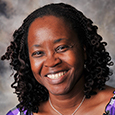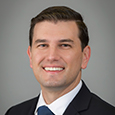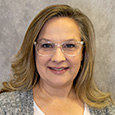Fellowship Program Information
Fellow Role by Year
- First Year (First 6 months)
- Pick up patients and manage those patients without a resident to learn EPIC and hospital processes
- Pick up patients requiring procedures (laceration repair, abscess incision and drainage, lumbar puncture) in order to demonstrate proficiency (will need to be signed off by your attendings and required numbers will be provided)
- Supervise resident procedures (after having been signed off on proficiency
- Respond to overhead pages for physician assistance
- Escort critically ill patients to the PICU and CT scanner
- Active participation in traumas
- Complete the primary assessment
- Assist the resident with the secondary assessment
- Develop a plan for orders and radiology studies
- Enroll patients in ongoing research studies
- First Year (Last 6 months)
- All of the above
- Staffing one pediatric resident on the A or B team (upon approval from fellowship leadership)
- Bedside teaching with the residents on interesting cases
- Second Year
- All of the above
- Staffing 1-2 residents on the B team
- Assist the OTL with maintaining flow in the ED (utilization of the internal waiting room and ortho chairs)
- Trauma:
- Teaching residents to perform the primary assessment
- Teaching residents to perform the secondary assessment
- Developing a plan with the critical care team prior to patient arrival
- Following through with orders, organizing steps in patient care
- Third Year
- All of the above
- Fellow shifts:
- Staffing 1-2 residents on the B team
- Supervising procedures
- Taking transport calls and OSH consults
- Maintaining ED patient flow
- Leading the trauma team (as appropriate)
- Pretending shifts (2 per ED month):
- Staffing the A team residents
- Maintaining ED patient flow on A team
- Communication with hospitalist/PICU/sub-specialty accepting physicians
- The attending will assist the fellow by supervising resident procedures and taking transport/OSH Medi-phone calls as necessary
Clinical Rotations
- Clinical sites
Our fellows rotate at a number of clinical sites in the DFW Metroplex
- Children’s Medical Center Dallas (CMC Dallas)
Fellows spend the majority of their clinical time at Children’s Medical Center Dallas, the flagship hospital of Children’s Health. CMC Dallas is a Level 1 Pediatric Trauma center with 490 licensed beds, including 77 Level 1 PICU and CVICU beds and more than 25 subspecialties including transplant and transport services. CMC Dallas is ranked by US News and World Report in all 10 pediatric specialties and is recognized as one of the top pediatric hospitals in the nation. PICU, NICU, REACH, and Anesthesia rotations are all completed here.
- Parkland Memorial Hospital
Located just minutes from the CMC Dallas ED, Parkland is a public hospital with a Level 1 Trauma center, a renowned burn center, and a Level III NICU, among other notable features. Fellows complete their Ultrasound Rotation in the Parkland ER. Fellows also complete labor and delivery shifts here.
- Methodist Dallas
Methodist Dallas is a Level 1 Trauma center where Pediatric-trained fellows complete a 1 month trauma rotation.
- Texas Health Resources Harris Methodist Fort Worth
Pediatric-trained fellows complete their adult EM rotations at this ED located in Fort Worth, TX.
- North Texas Poison Center
Fellows complete their toxicology rotation through the North Texas Poison Center.
- Children's Transport Services
Fellows complete their transport shifts (scheduled during PEM months) with Children's Transport Services. Fellows have the opportunity to ride along on ground, fixed-wing, and helicopter transports.
- Scottish Rite for Children Orthopedic and Sports Medicine Center
Pediatric-trained fellows complete their orthopedics rotation with the orthopedics and sports medicine departments at this hospital in Frisco, TX.
Scottish Rite for Children Orthopedic and Sports Medicine Center
- Children’s Medical Center Dallas (CMC Dallas)
- Rotations
- Pediatric Emergency Medicine (PEM)
Fellows complete 5 PEM rotations per year in the CMC Dallas ED. First-year fellows begin their training as “super-residents,” with transition to the full fellow role by the second half of their first year. Fellows take transport calls from outside facilities, oversee residents, perform procedures, and work alongside attendings to manage flow in the ED.
First-year fellows average 14 shifts per PEM block, second-year fellows average 13 shifts per PEM block, and third-year fellows average 12 shifts per PEM block. Shifts are scheduled for 9 hours, with one hour of overlap provided for finishing tasks and handoff to the oncoming fellow. For second and third-year fellows, several shifts per month are designated “procedure shifts,” with the opportunity to perform procedure in all areas of ED.
- Adult Emergency Medicine
PEM Fellows complete their adult emergency medicine rotations at Texas Health Resources Harris Methodist Fort Worth, focusing on procedural experience not as common in pediatric patients.
- Research
First and second year pediatric-trained fellows complete 3 research months per year; third year fellows have 6 research blocks. Fellows are scheduled for ED shifts during their research months, albeit fewer than during a PEM block. All fellows average 8 ED shifts during each research month.
- Pediatric Intensive Care (PICU)
First year pediatric and EM-trained fellows spend 1 month in the CMC Dallas PICU, functioning as a fellow on a PICU team.
- Trauma
First year pediatric-trained fellows spend 1 month in the Methodist Dallas ED, with the opportunity to refine ATLS skills and perform procedures.
- Anesthesiology
First year fellows spend 1 month on anesthesia at CMC Dallas.
- Orthopedics
First year pediatric-trained fellows spend 1 month at Scottish Rite for Children.
- Transport/EMS
Second and third year fellows schedule a transport shift once monthly during PEM months.
Second year fellows spend 2 weeks on an EMS rotation during their REACH/EMS block.
- REACH
Second year fellows spend 2 weeks at the Referral and Evaluation of At Risk Children (REACH) clinic with certified Child Abuse providers.
- Toxicology
Second-year fellows spend a month with the North Texas Poison Center.
- Ultrasound
Ultrasound is introduced to first-year fellows during orientation and throughout the year; fellows are encouraged to incorporate the use of ultrasound into their clinical shifts. Regular feedback on fellow scans and one-on-one teaching sessions are provided by Dr. Michael Cooper, Director of Clinical Ultrasound for the division of emergency medicine. Second-year fellows spend a month at Parkland refining their ultrasound skills.
During the ultrasound month, fellows participate in regular didactics and scanning sessions with Parkland faculty. Fellows can also schedule scanning shifts at CMC Dallas in addition to those at Parkland.
- NICU
EM-trained fellows spend one month with the Neonatal Resuscitation Team at Parkland, refining NRP skills through attendance at deliveries.
- Pediatric Inpatient Hospital Medicine
EM-trained fellows spend one month on various inpatient medicine services, expanding their understanding of pediatric care and the management of complex pediatric conditions.
- Pediatric Outpatient Medicine
EM-trained fellows spend 1 month at various outpatient pediatric clinics, namely the complex care clinic, in order to gain more experience with pediatric patients and the nuances of outpatient care.
- CVICU-Cards
EM-trained fellows spend 1 month with the CVICU and Cardiology teams to gain more experience with pediatric cardiac concerns and management of congenital heart disease.
- Pediatric Emergency Medicine (PEM)
Research and Quality Improvement
- Research
Fellows are required to complete a scholarly project and are provided with a variety of support systems along the way. First-year fellows participate in the Research Design Workshop series beginning in the first month of fellowship, which provides basic research education and encourages fellows to develop their own projects as the curriculum progresses. Fellows identify a research mentor and are supported by the department’s research council, Scholarly Oversight Committee (SOC), and a full-time research coordinator. Regularly scheduled Children’s Fellows Core Curriculum conferences encourage ongoing education and allow for exposure to the scholarly projects of fellows in other subspecialties at CMC Dallas. Fellows assists with enrollment of subjects in co-fellows’ studies in the emergency department.
Recent fellow publications:
- Bolt J, Patel F, Stone L, Pandian D, Manuel MM, Gaines N. Impact of COVID-19 on Pediatric Mental and Behavioral Health Visits to the Emergency Department. Pediatr Emerg Care 2022 Aug 1 38(8):409-415. PMID:35766893
- Day C, Diebel A, Oke O, Nesiama J. Rural Versus Urban Pediatric Firearm Injuries: A 10-year Review at a Level 1 Trauma Center Clin Med Res 2021 Nov 10(6):173-179.
- Day C, Tharayil A A case of an 8-year old with unknown mechanism of an open globe injury. Vis J of Emerg Med 2022 Oct 29(10/1/2022):101468.
- Manuel MM, Feng SY, Yen K, Patel F. The agitated pediatric patient located in the emergency department: The APPLIED observational study. J Am Coll Emerg Physicians Open 2022 Jun 3(3):e12766. PMID:35769845
- Manuel M, Potera RM, Choudhary A, Tiller J. Refractory thyroid storm in a pediatric patient.Adv Critic Care Med 2020 Dec 2(1):2:005.
- Srivastava A, Pandya L. Nevus sebaceous in a teenager. Visual Journal of Emergency Medicine 2020 Jul 20():100786.
- Tharayil A, Long R, Parikh R. Bezoar as a result of plastikophagia. Consultant 2020 Mar 60(3)
- Pandya L, Cooper M, Patel N, Leonard D, Fernandes N, Spear D, Nesiama JA. Point-of-Care Ultrasound for Central Venous Assessment in the Emergency Department: A Prospective Study Comparing the Femoral and Internal Jugular Veins. Pediatr Emerg Care 2020 Oct 14 Epub ahead of print. PMID:33065673
- Quality Improvement
Each fellowship class is required to complete a quality improvement (QI) project. Formal QI education is available through CMC Dallas and department faculty with interest in QI are available to assist fellows in the design and implementation of these projects.
Recent fellow QI projects:
- Sepsis Response Team in the ER: evaluating the effect of a sepsis response team on time to administration of antibiotics for patients with suspected sepsis.
- Improving Time to Antibiotic Administration in Febrile Patients with Oncological Diagnoses and Sickle Cell Disease in the Emergency Department
Educational Opportunities
- Fellowship Didactics
Once weekly, from 8a-12p, fellows participate in a protected educational conference. Faculty and guest speakers provide lectures on topics relevant to each month’s theme, and fellows give a variety of presentations throughout the year. Fellow presentations include journal club (an in-depth review of a pertinent article with a faculty mentor), journal scan (a brief review of significant recent publications), case report, fellow lecture, peer review, and M&M conference.
We collaborate with other pediatric emergency medicine programs in the state of Texas to organize quarterly joint PEM fellow conferences. We discuss relevant educational topics as well as career development topics such as mentorship and interviewing.
- Simulation
Once monthly, fellows participate in a high-yield simulation. Simulations take place either in the ED or the CMC Dallas simulation center.
- Resident Education
Fellows are encouraged to participate in resident education daily in the ED, as well as in a more formal lecture setting through weekly ED resident conferences and pediatric resident noon conferences. Fellows are frequently invited to participate as facilitators in EM and Family Medicine resident simulation days as well.
- Multidisciplinary Education
PEM fellows and attendings participate in a weekly multidisciplinary conference with the UTSW Department of Pediatrics. Fellows and faculty are invited to present at this conference when an ED case is discussed.
The ED and PICU participate in periodic joint conferences and M&M’s to discuss mutual cases; fellows are also invited to present cases for these discussions.
- Administrative Opportunities
Each fellow is expected to take on an administrative role within the fellowship program. Examples include “Hot Topic” (monthly board review) facilitator, recruitment, website development, social media, and Program Evaluation Committee (PEC).
Each year, one member of the 3rd year class serves as the chief fellow, working closely with the fellowship administration to facilitate scheduling, education, and general program advancement.
Contact Us



Assistant Professor
Assistant Director, Pediatric Emergency Medicine Fellowship Program

